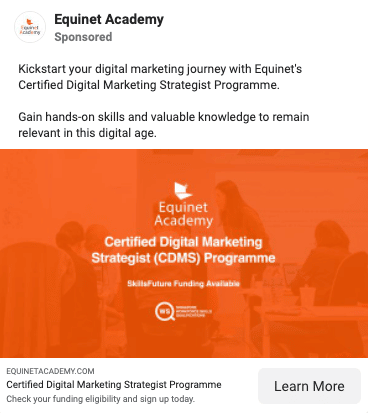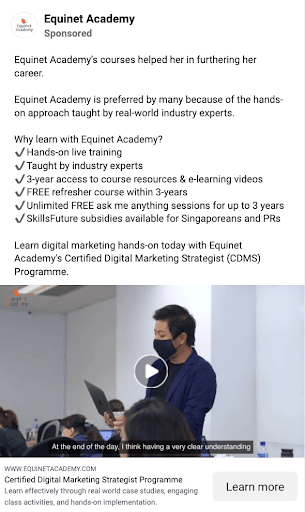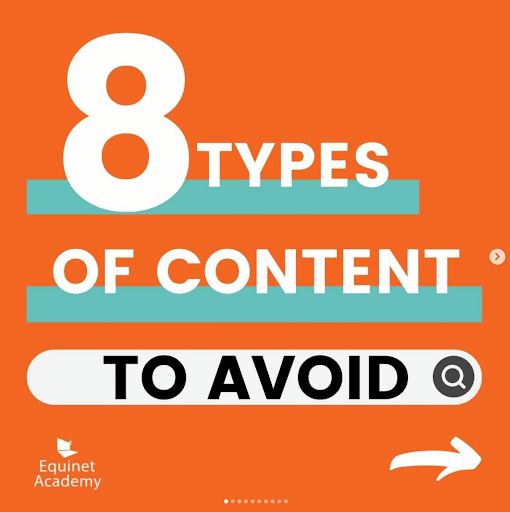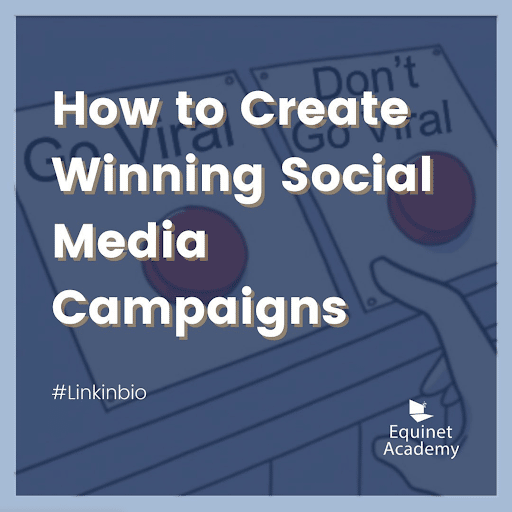Content
- Best Practices for Ad Copy
- Best Practices for Ad Creatives
- Ad Copywriting Mistakes to Avoid: What Not to Do When Writing Ad Copy
- Key Takeaways
Share This
The rise of the internet and social media has made it easier than ever for brands to advertise their products and services. Any brand can promote its products and reach a wider audience, gaining new customers and followers daily. But with this ease comes a flood of digital ads across every platform, making it harder to capture attention.
That leads to a bigger challenge—how do you stand out? With the constant bombardment of ads that users receive daily, many will find their ads simply being scrolled past and rarely ever interacted with.
This growing challenge may discourage some brands from pursuing online advertising. However, a proven way to overcome digital ad fatigue is by crafting compelling and engaging advertisements that resonate with your audience.
Digital ads are made up of two elements that will determine their efficacy: the copy and the creative. How you frame an ad matters more than what it is you’re promoting. If your ad is compelling enough, a user’s curiosity and interest will drive them to click through and browse your business.
In this guide, we will detail the best practices for ad copy and creative for you to apply in your digital advertising strategy and effectively stand out from the crowd.

When it comes to digital advertising, you only have seconds to make an impression and hold a user’s attention. An impactful headline could make all the difference in your click-through rates and lead generation.
Think about your internet habits — what makes you click on an ad? Once your attention is captured by a visual, the next thing you notice is the headline. You want to find out what exactly this ad is trying to convey, and you look to the text for an answer.
A great headline hooks users, helps them quickly understand your message, and brings them one step closer to converting..
There are three simple ways to create compelling headlines:
When creating an ad, your goal first and foremost is to grab and hold a user’s attention, and writing a compelling headline is a surefire way to do so.

Including keywords in the body copy of a digital ad makes it easier for consumers (and search engines) to comprehend its message.
Balance specific and broad keywords—each serves a different purpose. Specific keywords attract returning users; broad ones reach new audiences. Specific keywords target recurring consumers, while general keywords target broader audiences to attract new consumers.
Ensure the message is readable and concise; do not bombard the body copy with keywords, as it can often make the message confusing and penalise your ad. You only have a split second to grasp a user’s attention with an ad, so using too many keywords can cause the audience to lose interest and scroll on.
Additionally, understand and recognise the impact of keywords before creating an ad. Keywords have to be used with a clear objective — think of your audience’s intent and reason for using keywords in their search.
Write ad copies that speak to your target consumer. Avoid irrelevant offers. Aim for quality clicks that bring in the right customers—this saves your ad spend and boosts results.
Define your targeted audience before you write your copy. Profile your persona using insights from your audience. Ask yourself:
This will help you develop a strong understanding of who your reader is and allow you to speak their language.
Additionally, consider creating a customer persona, which is a fictional character that embodies the traits found in your ideal customer. A customer persona is more specific than a typical target audience analysis, which allows for better tailoring to appeal to your audience.
For a more in-depth look into creating a customer persona, check out our guide here.

It is important to include call-to-actions to guide the audience to take a desired action. Use straightforward words to tell readers what to do.
Start with your objective. Use action-driven verbs like “Follow”, “Book now”, or “Learn more” to guide your audience toward action.
A/B testing is a feature that compares two variations of the same ad to determine which performs better. This allows you to compare the two variations in terms of performance, and you can then determine what combination of copy and creative works best.
Test one element at a time—such as a headline or CTA—so you can identify what’s driving performance.
Consider applying different keywords and combinations in different headlines and/or body copies, for example. When you do so, you get a better idea of what kind of language and words have a better effect on users interacting with your ad.
Power words are words often used by copywriters that trigger psychological reactions in readers, such as to evoke curiosity or trust. When you utilise power words in your digital ads, you help convince users to take up your desired action.
Instead of hard-selling, use powerful words to subtly evoke emotions and encourage clicks.
For example, if you wanted to evoke trust in your readers, you should use power words like “award-winning”, “endorsed”, “authentic”, or “money-back”. When you read these words, what thoughts pop into your head?
These words help build instant credibility because we associate them with trust. The everyday instances where these words and phrases are used have caused a natural association with trust. These words have their connotations that make you appear more trustworthy to the reader.
As another example, if you wanted to instill a sense of urgency in your audience, you may use words like “limited time”, “ends today”, or “only XX left”. Adding a sense of urgency to your ad copy could convince users to take that action quickly.
Due to its psychological reaction, using powerful words in your copy may be what pushes your audience to finally take action.

In 2022, as noted by Statista, mobile devices accounted for approximately half of web traffic worldwide. As smartphones get smarter and more capable, it is safe to assume this figure will only go up.
As such, digital ads must be mobile optimised to ensure your ads are reaching all users effectively. We would recommend using expanded text ads as they have been designed to be mobile optimised.
Expanded text ads allow for more text to be displayed to help you better convey your message. Expanded text ads feature up to three headlines, two descriptions, and up to 90 characters for each description. Consider using expanded text ads to help in becoming mobile-optimised.
Always follow the character limits for each ad platform—they’re optimised for performance. Ensure that you write within this range as these platforms optimise their character limit to what performs best.
Users don’t appreciate being faced with a huge chunk of text and will likely scroll past and avoid interacting further with your ad. As such, always keep a reference for the word or character limits on each platform to ensure you keep within that range.

First impressions make all the difference. When you create digital ads, your first goal is to grab a user’s attention, and you do so with the help of a stunning visual. Your visual is what gives users their first impression of your brand.
Visuals reflect your brand’s identity—what you sell, your style, and your credibility. Avoid using blurry, pixelated, and low-quality images, as they can deter users from interacting with your ads.
When you use high-quality images, you portray your company as more professional and legitimate, and if the visual is compelling enough, users will be intrigued to interact further.
Everyone loves a good offer on the products or services that they need. If your ad campaign revolves around a sale or promotion, be sure to include that in your visual instead of only in the copy.
As the visual is what grabs a user’s attention first, use words and phrases that emphasise the promotion you are currently running. Words such as “Sale” or “Discount” drive a user’s curiosity and encourage them to click through. While it should not be the main focus of a digital ad, it is best practice to showcase the offers you have available within the image itself.
At the same time, ensure that the text overlaid on an image fits within the restrictions of different platforms. Images with too much text tend to perform badly, so various platforms have introduced restrictions on overlaid text to help you optimise performance.
What are you selling to your audience? Showcase your product or service so users immediately know what you’re offering. As you’re showing these ads to your target audience, your brand should help them address and solve their pain points, so it is often best practice to feature your product or service.
When you include your product or service as the main focus, you prevent misleading your audience, and when they click through, they know exactly what it is they can expect from you. While you should include other elements, make sure your product is what stands out the most in your ad visual.
On the Google Network, there are over 40 different display ad formats available, and the more formats you include in your ad group, the higher your chance of reaching your goals for impressions.
Use a variety of formats and ratios in your ad group. Keep the copy consistent to maximise reach. When you create variations, you can also determine which formats perform the best among all the ads you run within a campaign.
According to Google, these five formats are the highest performing:

Your logo perfectly encapsulates your brand, and it should always be included in digital ads. You want users to associate your logo with your brand and to instantly recognise it once they see it.
Do not overlay your logo onto your image, as that is often not permitted by Google; instead, consider including a small version of your logo in one of the corners of your digital ad. Ensure it’s visible when viewed, but does not detract from the main focus of your ad, which should be your products or services.

Your visual should never be cluttered with text — generally, the rule of thumb is to stick to less than 20% of the image containing text — but your text should be eye-catching enough that it can stand out from the crowd and grab a user’s attention.
We would recommend using bold fonts in your ads that are easy to read for anyone; avoid using very thin and small fonts and, at times, avoid using cursive to ensure readability. Additionally, ensure that the colours of the text and image are sufficiently contrasting, as some colour combinations can make it difficult to read. Avoid using all uppercase or lowercase tex,t as it could appear unprofessional.
Creating compelling ad copy is essential to any successful marketing campaign. When crafted well, ad copy captures attention, builds interest, and encourages users to take action. However, many marketers—both new and experienced—fall into common traps that limit the effectiveness of their ads. In today’s fast-moving digital space, these mistakes can result in lost clicks, wasted ad spend, and low engagement.
One of the most common ad writing errors is using weak or generic calls-to-action (CTAs). Phrases like “Click Here” or “Learn More” may be familiar, but they’re often too vague to motivate action. A CTA should be direct and benefit-focused, clearly telling users what they’ll get by clicking. For example, “Download Your Free Guide Now” or “Claim Your 20% Discount Today” is far more persuasive and specific than a generic alternative.
Another widespread pitfall is vague or confusing messaging. If your ad doesn’t communicate what you’re offering and why it matters, users will scroll past without a second thought. Digital audiences skim, so your message needs to be both concise and relevant. Instead of saying something unclear like “Solutions that work for everyone,” opt for a copy that speaks directly to a problem or benefit, such as “Affordable Web Design for Small Business Owners.”
Overusing jargon or buzzwords is another issue that can alienate your audience. Terms like “next-gen solutions” or “synergy” may sound impressive internally, but they often confuse readers. When in doubt, choose plain, conversational language that your audience will understand without effort. For example, “We help you reach more customers through email, social media, and search ads” is clearer and more relatable than a buzzword-filled version.
Trying to say too much in a single ad is also a common mistake. When an ad includes multiple offers, features, or benefits, it can overwhelm the reader and dilute the message. The best-performing ads focus on just one clear idea. Whether it’s highlighting a specific discount, feature, or benefit, keep your message sharp and to the point.
Another copywriting pitfall is failing to tailor your message to the platform or audience. Using the same copy across Facebook, Google, Instagram, and LinkedIn might save time, but it risks poor engagement. Each platform has different user behaviours and expectations. A formal tone might work on LinkedIn, but a more conversational approach could be better suited for Instagram. Knowing your audience and adjusting your copy accordingly will help your ads perform better.
So, how can you spot and fix weak or ineffective copy? Start by reading your ad out loud—if it doesn’t sound natural, it probably needs work. Ask someone unfamiliar with the ad if they can understand the message in five seconds or less. You can also use readability tools like Hemingway Editor or Grammarly to refine your language. Don’t forget to test different versions using A/B testing to see what resonates most with your audience. If your ad’s click-through or conversion rates are low, that could be a sign that the copy needs improvement.
Avoiding these common copywriting mistakes can dramatically boost your ad performance. Clear, simple, and relevant copy not only improves engagement but also helps build trust with your audience. By focusing on strong CTAs, cutting out jargon, and delivering a focused message, you’ll be on your way to writing ad copy that converts.
While this guide is not a definitive standard for what you should do when creating a digital ad, it provides a foundation for you to start on the right foot. Ensure you follow these best practices when creating digital ads across all platforms.
However, if you’re still struggling with your advertising or copywriting efforts, do consider signing up for one of our many digital marketing courses held here in Singapore.
At Equinet Academy, we offer the Certified Digital Marketing Strategist V2 (CDMS) Programme, which covers a wide range of digital marketing areas that will help you become a fully-fledged digital marketer.
The CDMS Programme covers the following seven modules:
The completion of these modules will lead the learners to attain a Certified Digital Marketing Strategist v2 Certificate, bringing them one step closer to achieving their digital marketing goals.
Alongside this, we also offer other courses such as Copywriting and Content Writing, which will help you understand the necessity of powerful copy and how to achieve it.
Receive the latest blog articles right into your inbox.
Reader Interactions